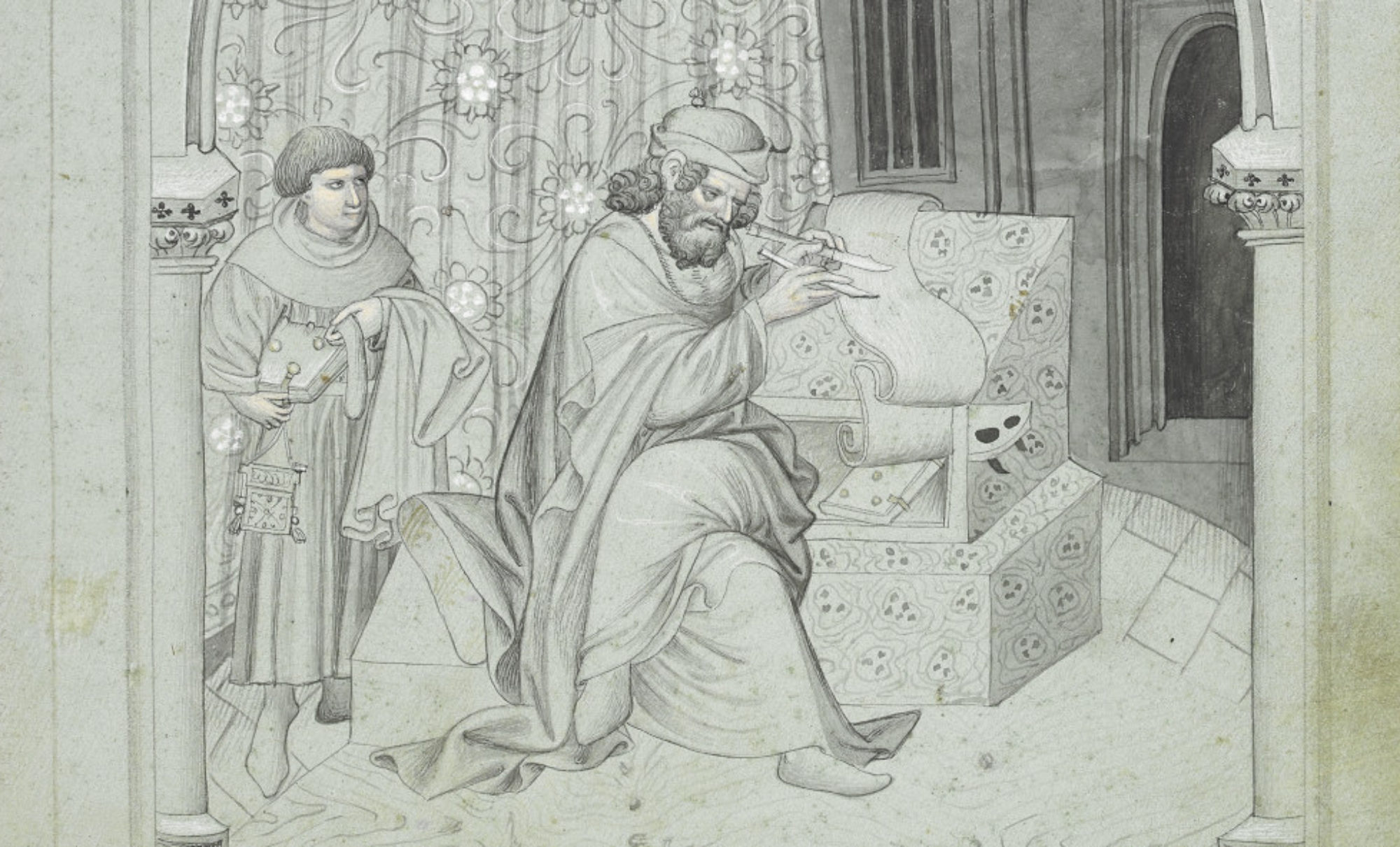For this school year’s exciting inaugural post, Maidie Hilmo shares her request for a scientific analysis of the Pearl-Gawain manuscript (British Library, MS Cotton Nero A.x), containing the unique copy of the Middle English poems: Pearl, Cleanness, Patience, and Sir Gawain and the Green Knight. It shows the kind of questions that help gain access to the viewing of original manuscripts and can result in a technological investigation of specific details. Bringing together science and art history, Hilmo has uncovered evidence that “the scribe was also the draftsperson of the underdrawings. It appears that the painted layers of the miniatures were added by one or more colorists, while the large flourished initials beginning the text of the poems were executed by someone with a different pigment not used in the miniatures.” The results of this request to the British Library—comprising the detailed report on the pigments by Dr. Paul Garside and a set of enhanced images by Dr. Christina Duffy, the Imaging Scientist — will become available on the Cotton Nero A.x Project website and, selectively, in publications by Hilmo, including: “Did the Scribe Draw the Miniatures in British Library, MS Cotton Nero A.x (The Pearl-Gawain Manuscript)?,” forthcoming in the Journal of the Early Book Society; and “Re-conceptualizing the Poems of the Pearl-Gawain Manuscript,” forthcoming in Manuscript Studies. To learn more, check out her special project here on our site.
Owls: Always a Hoot?
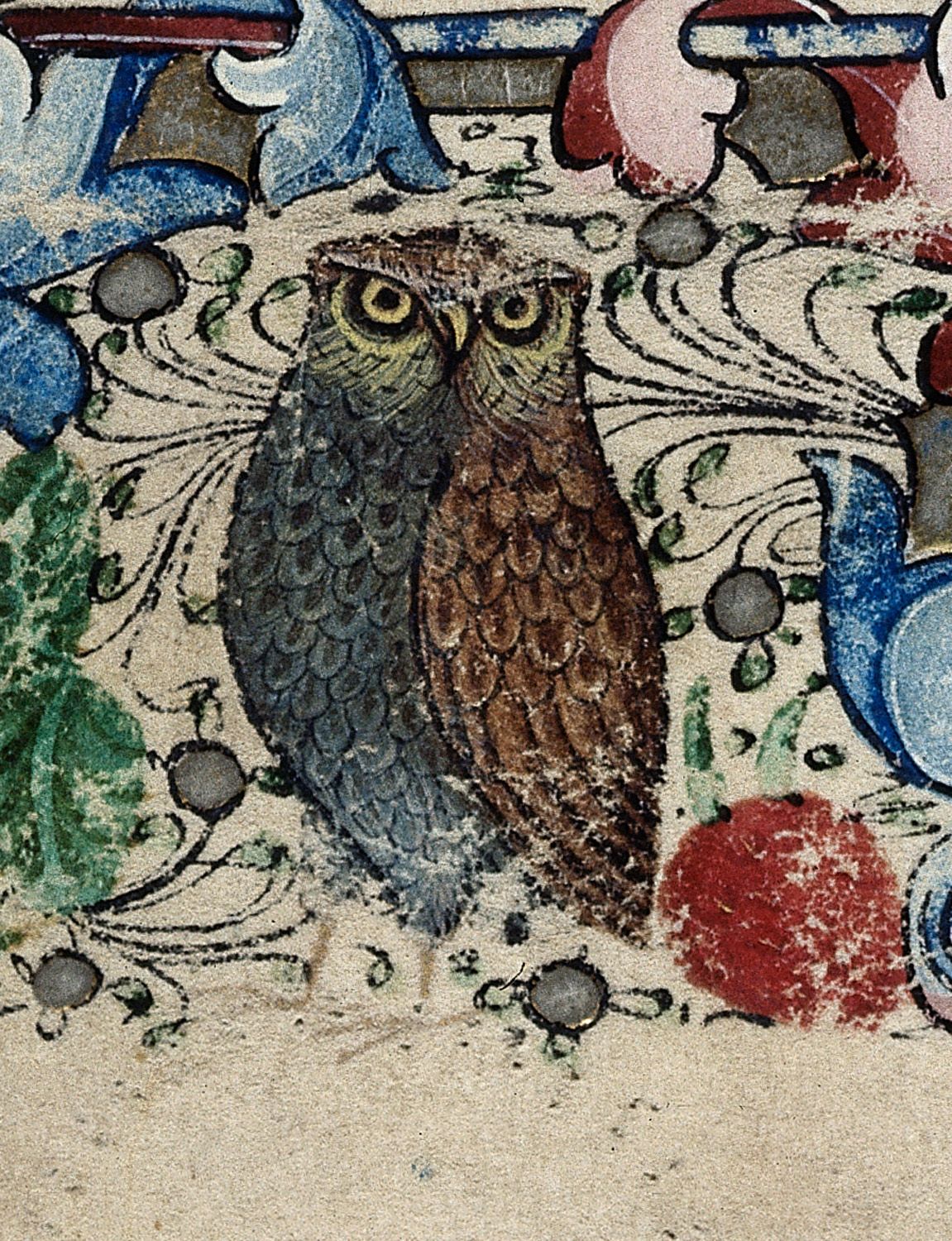
Today, owls are usually associated with wisdom. Their depictions in modern iconography range from majestic hunters to cute messengers à la Harry Potter. The convention of associating these nocturnal birds with wisdom goes all the way back to ancient Greeks and Romans depicting owls with the goddess of wisdom, Athena/Minerva. However, owl symbolism has not continuously had such positive connotations; in fact, in Medieval England, they were drastically different.
Owls have a strong presence in medieval fables and poems, many of them associating owls with the darkness and uncleanliness. Medieval poets took biblical references to owls as inspiration. For example, Job in his sorrow is referred to as the companion of owls, linking owls with mourning. In Leviticus, owls are mentioned as unclean birds. Building on these negative associations, medieval beast poems include violence towards owls. In Cuono of St. Nabor’s fable “The Peacock and the Owl,” a white peacock, symbolizing light and goodness, is violently murdered by an “envious owl” (Ziolkowski 245), and then a violent curse is wished upon the owl to avenge the death of the beautiful peacock. In the same vein, in the often-repeated story of the owlet in the hawk’s nest, the owl’s true identity is discovered when it fouls the nest—and then it is thrown out of the nest and dismembered by magpies and crows (Mann 178).
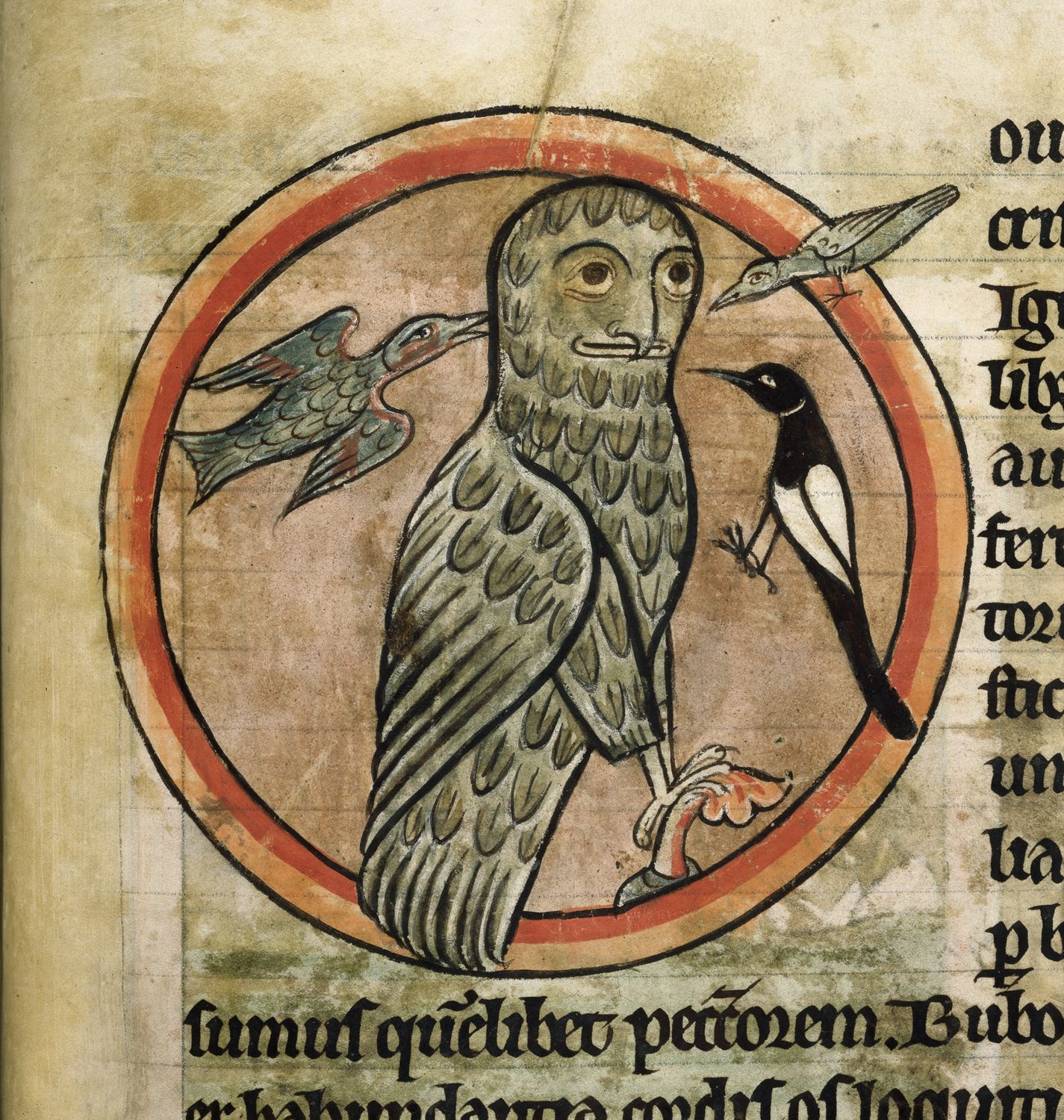
A more disturbing element of owl’s negative symbolism is their association with anti-Semitism. Owls, who are day-blind and live in darkness, were used to represent Jews in medieval England, who were said to have rejected the light of Christ and live in the uncleanliness of religious blasphemy. This accounts for the anthropomorphic appearance of some manuscript drawings of owls: they were sometimes given hooked noses to resemble Jews, and their horns represent the horned hats Jews were forced to wear.
Not all mentions of owls are completely negative, however. The Aberdeen bestiary presents a positive moralization of owls, saying that they represent Christ, who lived in the darkness (or away from view, like the owl) because he wanted to save sinners who also lived in darkness away from the light of God.
One of the most well-know medieval literary owls is in the poem The Owl and the Nightingale. The Owl and the Nightingale offer retellings of some of Marie de France’s fables, illustrating the popularity of animal fables. Significantly, the Nightingale recites the fable of the owl in the hawk’s nest to emphasize the inescapability of nature over nurture: the owl is recognized because it can’t escape its unclean nature despite being raised by a different bird. However, the poem gives the well-known story a twist, turning the usual moral condemnation of the owl on its head. The owl counters that it cannot be at fault for a nature that is common to all infants—even humans.
Owl symbolism continued to have negative associations even after the medieval period. During the Reformation, they came to be associated with Catholics, and later with Puritans (Hirsch 151)—generally with the vilified religious group du jour. Negative symbolism continued into the early modern period: in several of Shakespeare’s plays, the owl is an evil omen. Though the owl has much more positive connotations today, its history is plagued by darkness and negativity.
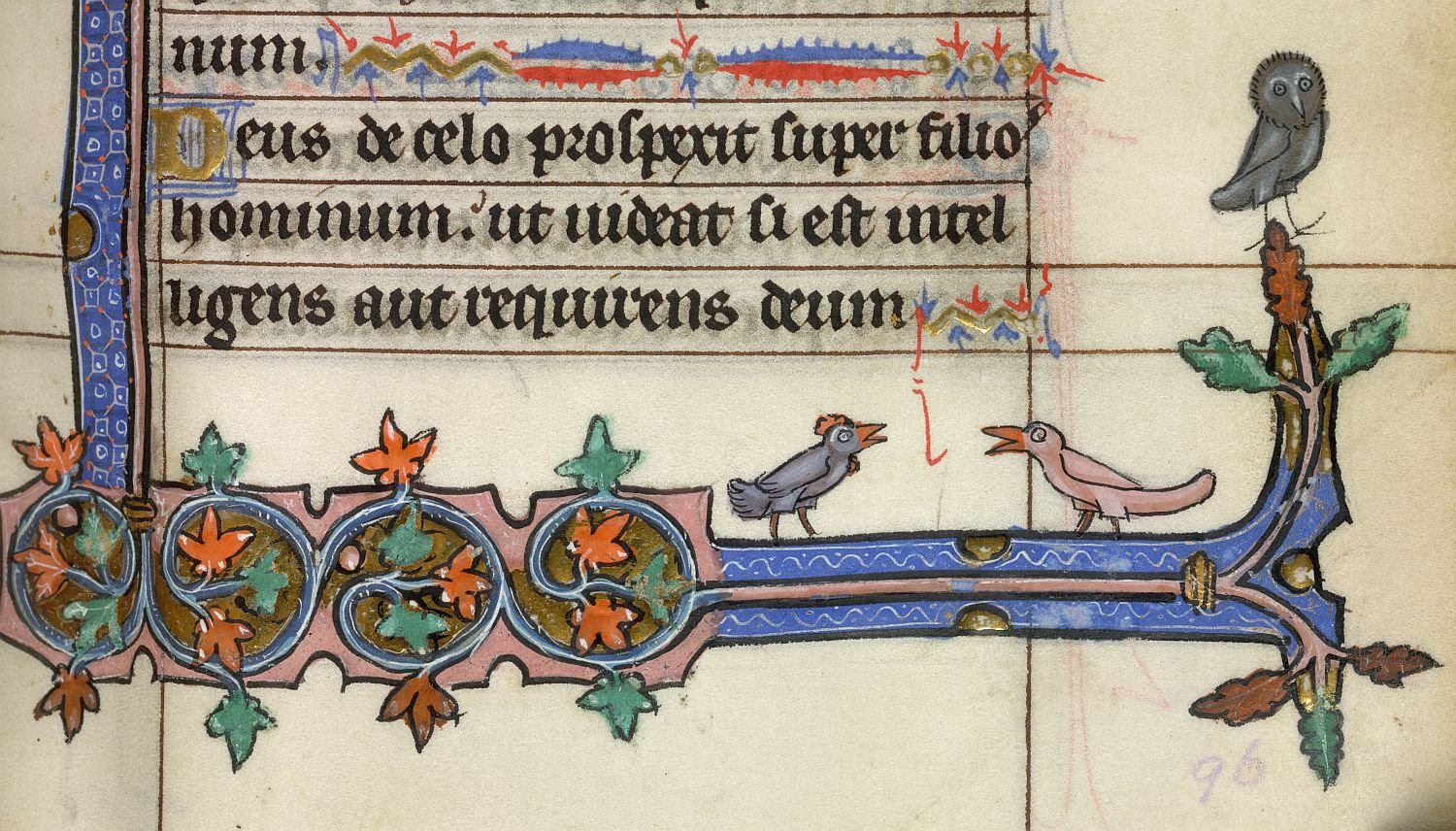
Anne Marie Blieszner
MA Candidate
Department of English
University of Notre Dame
Works Cited
Hirsch, Brett D. “From Jew to Puritan: The Emblematic Owl in Early English Culture.” “This Earthly Stage”: World and Stage in Late Medieval and Early Modern England. Brett Hirsch and Christopher Wortham, Eds. Turnhout, Belgium: Brepols, 2010.
Mann, Jill. From Aesop to Reynard: Beast Literature in Medieval Britain. Oxford: Oxford University Press, 2009.
Ziolkowski, Jan M. Talking Animals: Medieval Latin Beast Poetry, 750-1150. Philadelphia: University of Pennsylvania Press, 1993.
Illustrating the Gawain Manuscript: New Scientific Evidence!
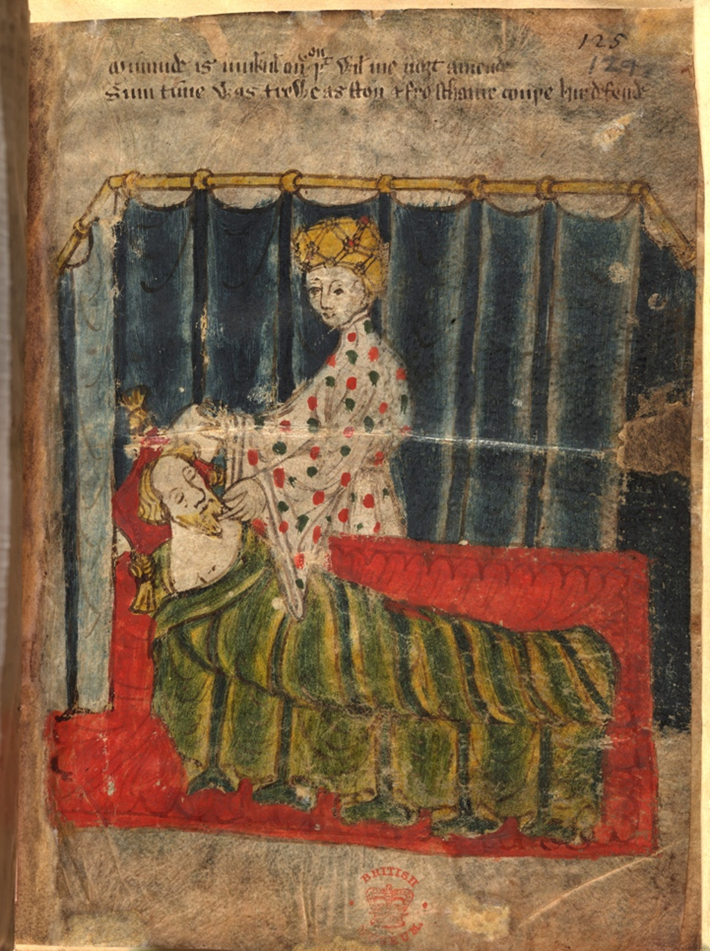
British Library Cotton Nero A.x, f. 125r/129r; © The British Library
New scientific analysis may completely change our understanding of one of the most famous manuscripts for students of Middle English literature. British Library Cotton Nero A.x is the sole extant manuscript of the works of the so-called Gawain-poet, the anonymous author of Pearl, Cleanness, Patience, and Sir Gawain and the Green Knight. These jewels of the Alliterative Revival are today some of the best-known medieval English works, but we would not have them at all if they did not survive in this single late fourteenth-century manuscript. Even better for students of Middle English literature is that this manuscript is illustrated, including scenes from all four texts. For years, scholars have offered only a poor critical assessment of the pictures, an assessment that a few more recent scholars have begun to reexamine. Are these really the crudely executed illustrations of an amateur artist?
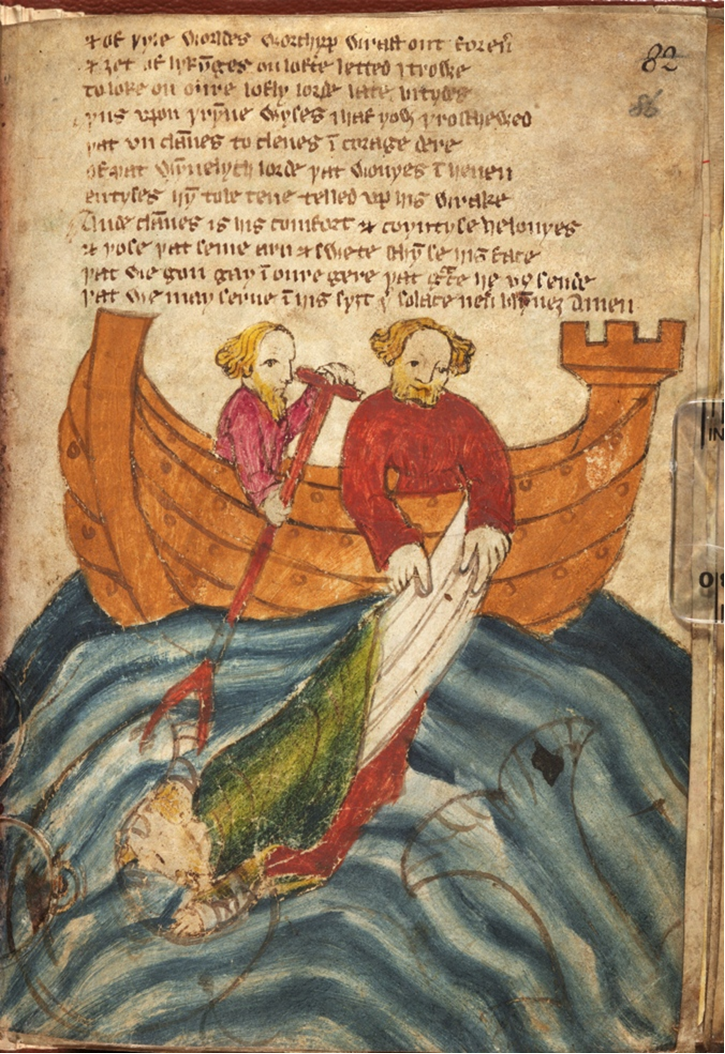
British Library Cotton Nero A.x (art. 3), f. 82r/86r © The British Library
New discoveries, based on analysis of the pigments and ink, may change our understanding of the part these illustrations may have played in the original production of the manuscript. Maidie Hilmo, of the University of Victoria, has studied these illustrations extensively, most recently in a new overview of the pictures that she has written for eventual publication on the Cotton Nero A.x. Project, an international initiative of the University of Calgary to make digital images, transcriptions, and critical editions of the manuscript more widely available. She requested a scientific analysis of the pigments, and one of the most striking results is that the same iron gall ink was used for both the text and the underdrawings of the images, as Paul Garside, the Senior Conservation Scientist at the British Library, has indicated. Is it possible this may mean the illustrations, or at least the underdrawings, were drawn around the same time the manuscript was originally written, possibly even by the scribe? There is no smoking gun, but it is true that iron gall ink was not what illuminators ordinarily used for their drawings – this ink was far more typically the medium of scribes, rather than manuscript artists, as indicated by Mark Clarke, an internationally acknowledged expert on medieval pigments.
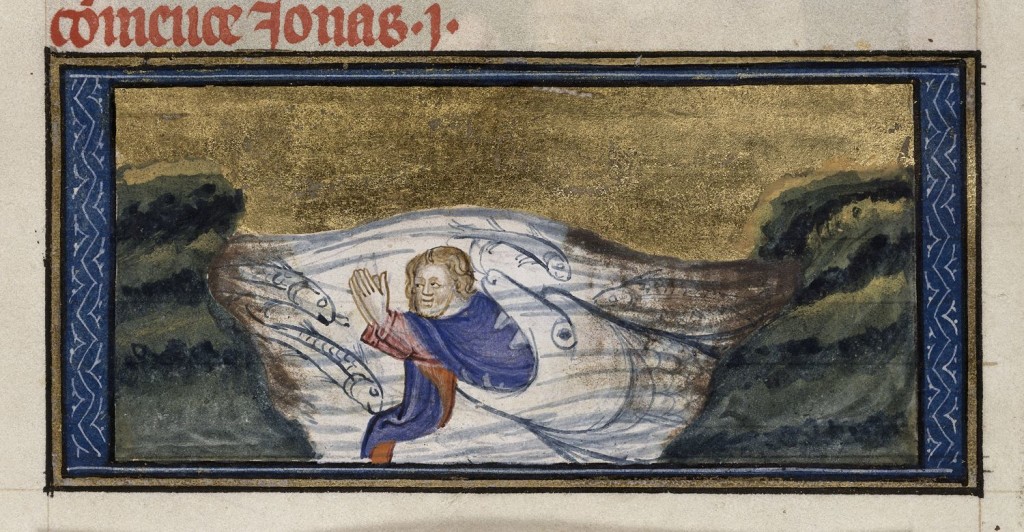
British Library Royal MS 19 D.ii, f. 395r
Traditionally, there has been a great deal of debate surrounding the relative timeframe of the copying of the manuscript’s text and the drawing and painting (not necessarily the same thing!) of the illustrations. Many earlier efforts at dating the illustrations suggested that they were made around 1400-1420, potentially some decades after the 1375-1400 copying of the text.1 This new analysis suggests such dating of the pictures may be off, and invites future scholars to reassess the dating of the various components of the illustrations in relation to the text. Hilmo considers Jennifer Lee’s argument that the heavy-handed painting may have been done by another hand, different from the artist of the underdrawings.2
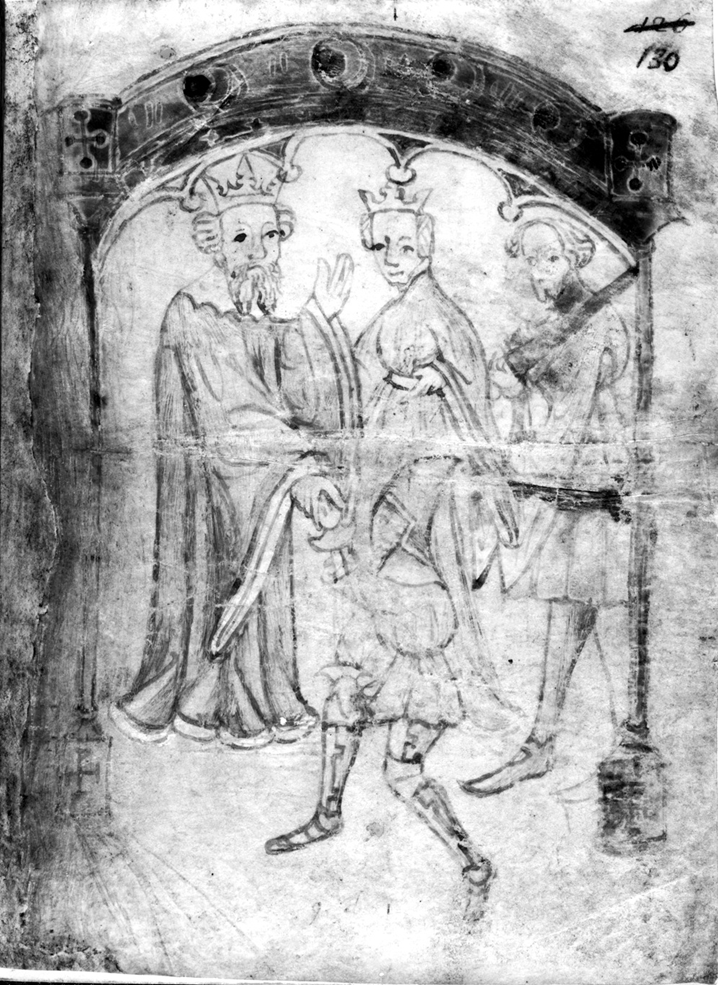
British Library Cotton Nero A.x (art. 3), f. 126r/130r © The British Library
Hilmo invites the meditative reader to reconsider the function of the miniatures not only in illustrating individual poems but also in linking all four poems into a cohesive narrative reshaping and unifying them “into a larger interpretive, typological and iconographic framework.” Whether or not a thoughtful scribe was involved in this visual reconceptualization of the poems as a whole, this study encourages us to see fresh meanings in our successive encounters with Cotton Nero A.x.
For the full explanation of this new research, explore Hilmo’s overview and a draft of the complete article now available on the Chequered Board (she encourages responses).
Nicole Eddy
Medieval Institute
University of Notre Dame
1. See A. I. Doyle, “The Manuscripts,” in Middle English Alliterative Poetry and Its Literary Background: Seven Essays, ed. David Lawton (Cambridge: D. S. Brewer, 1982), 88–100; Sarah Horrall, “Notes on British Library, MS Cotton Nero A X,” Manuscripta 30 (1986): 191–98.
2. Jennifer A. Lee, “The Illuminating Critic: The Illustrator of Cotton Nero A.X,” Studies in Iconography 3 (1977): 17–45.
